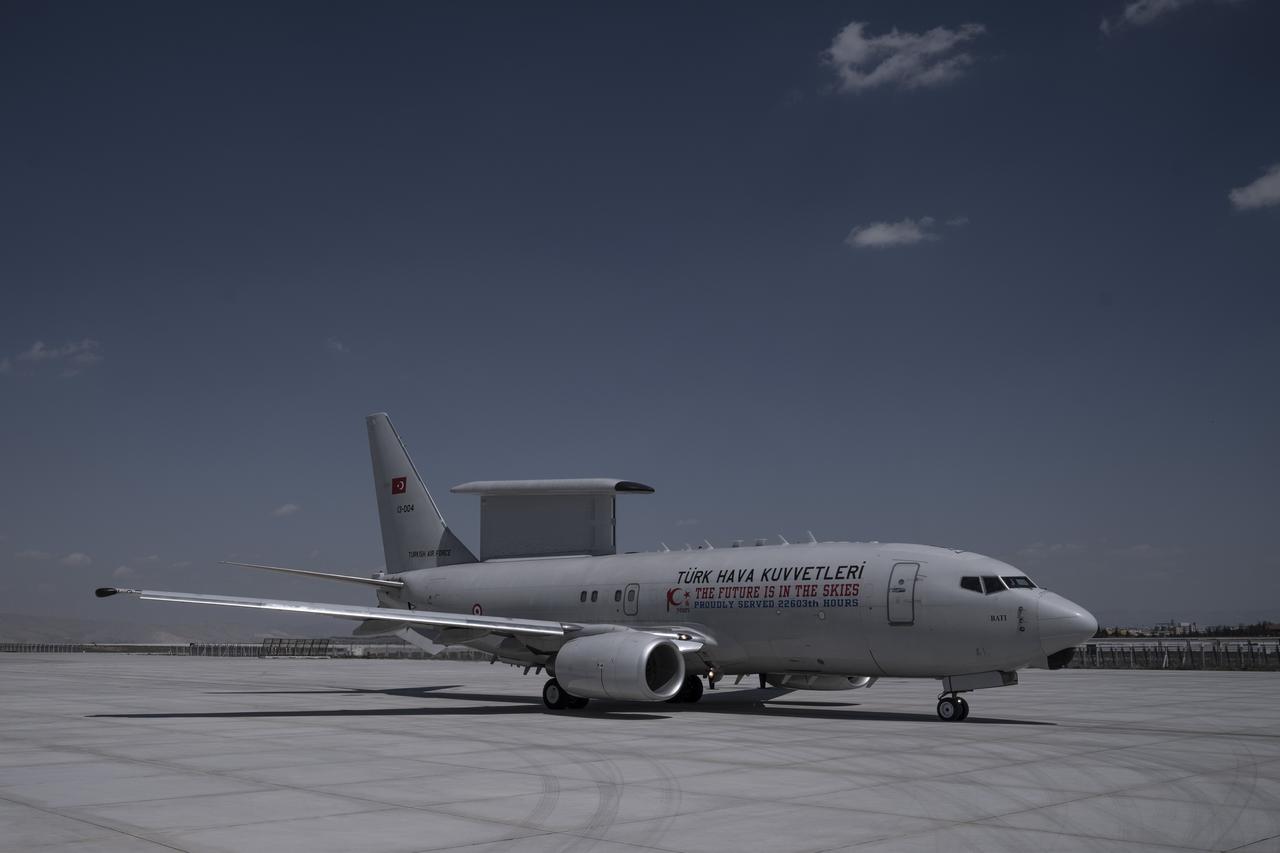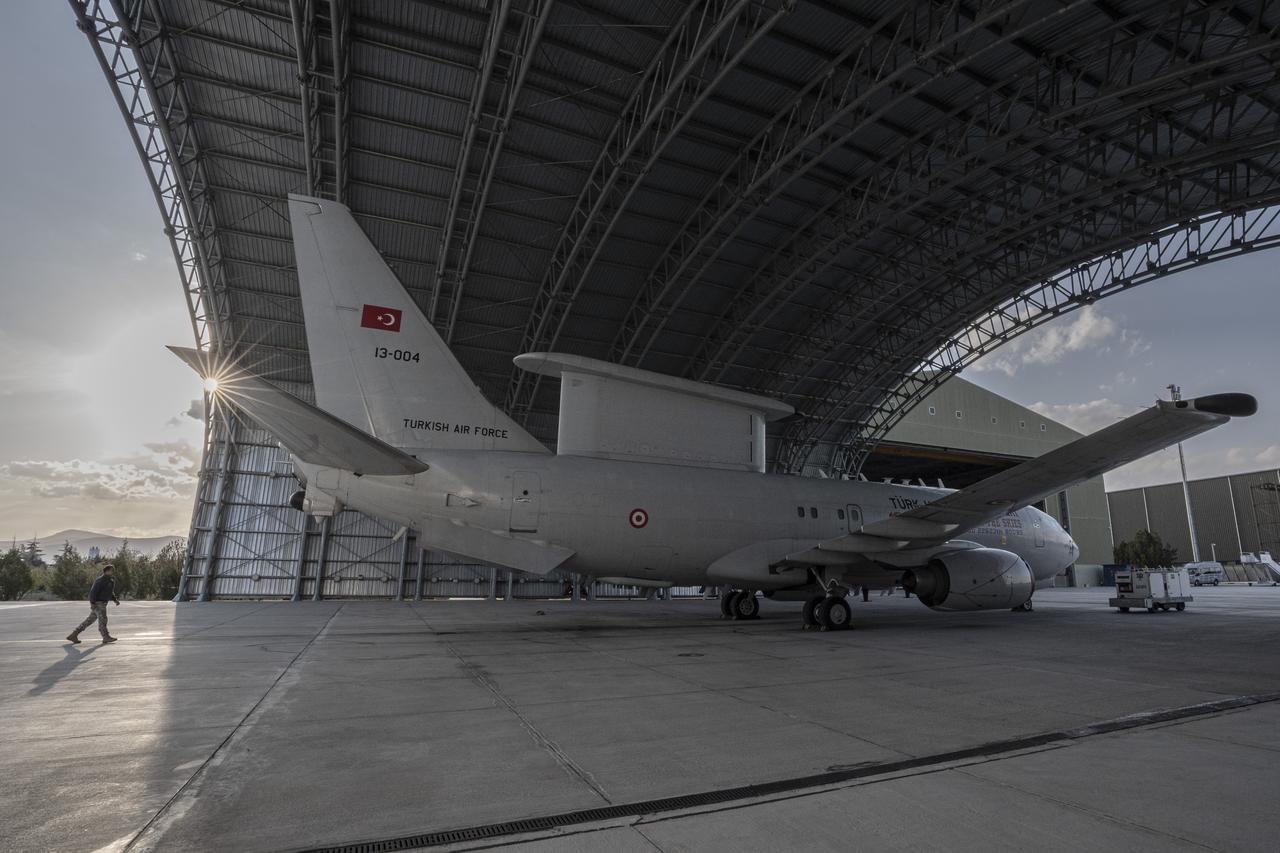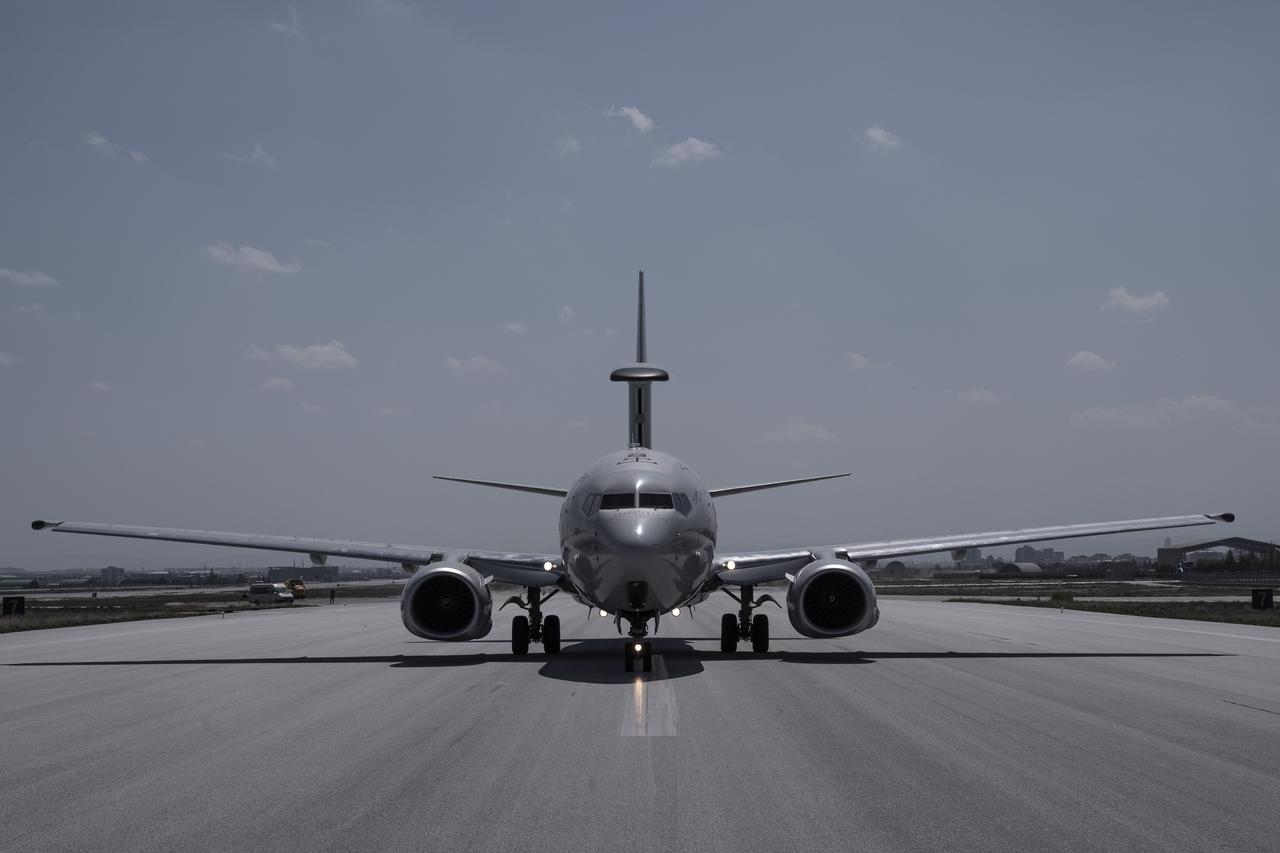
The Turkish Air Force leads the world in operational deployment of Airborne Early Warning and Control (AEW&C) aircraft, conducting critical surveillance missions across strategic regions while providing real-time intelligence to military units.
According to information provided by the 3rd Main Jet Base Command's AEW&C Group Command Deputy Fleet Commander, these sophisticated aircraft entered the Turkish Air Force inventory through the Peace Eagle Project launched in 2002, with four aircraft being deployed to Konya's 3rd Main Jet Base in 2014.

Only four countries worldwide maintain these specialized aircraft in their military arsenals, with Türkiye ranking first in operational deployment frequency. South Korea and Australia began operating similar aircraft during the same period.
The AEW&C aircraft feature cutting-edge technological systems that enable operations in all weather conditions.
Serving as high-value command, control, and combat support platforms, they utilize multi-functional electronic scanning radar systems to conduct 360-degree surveillance, identifying up to 1,500 targets at distances reaching 400 kilometers (248.5 miles).
"Steely-winged messengers of the unknown horizon," as they're called by their crews, these aircraft transmit identified traffic data in real-time to ground operation centers, aircraft, and ships in combat zones through datalink and combat systems, providing decision-makers with intelligence and informational superiority.
Operating at altitudes of 10 kilometers within designated airspace, these aircraft are manned by specialized crews averaging 12 personnel.
They can conduct missions for approximately 9 hours without aerial refueling or up to 16 hours with refueling when carrying a full complement of 19 crew members.
The AEW&C aircraft have played active roles in Türkiye's cross-border operations, including Operation Euphrates Shield, Olive Branch, Peace Spring, and Claw-Lock, while providing search and rescue support during counter-terrorism operations.
Additionally, these aircraft support naval operations by ensuring vessels and aircraft operating in international airspace across the Black Sea, Aegean, and particularly the Mediterranean can perform their duties effectively, safely, and with deterrent capability.

An Anadolu Agency (AA) team was granted special permission to observe the nationally conducted Anatolian Eagle Exercise at the 131st AEW&C Group Command based at the 3rd Main Jet Base.
During the generic scenario exercise, AEW&C teams conducted intelligence assessments of a "red country" identified as a threat.
Following examination of air defense and aircraft deployment structures and intelligence evaluation, flight preparations were made according to mission assignments, and the fully equipped team took position aboard the aircraft.
After final checks, the AEW&C aircraft launched for a three-hour mission in a simulated environment featuring the "red" country's ground-to-air missiles, aircraft, operation centers, high-value targets, and radars. The aircraft successfully enabled "blue" (friendly) country aircraft to neutralize their assigned targets.
The successfully completed Anatolian Eagle Exercises highlighted the Turkish Air Force's combat readiness, continuous development of weapons capabilities, techniques, and tactics, and the personnel's fighting determination.
The exercise stands as an important demonstration conducted by only a select number of countries worldwide, proving the Turkish Air Force's effectiveness as a regional power.